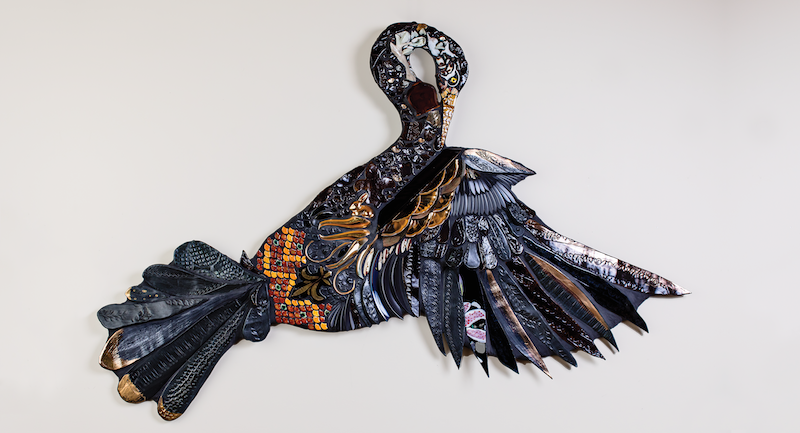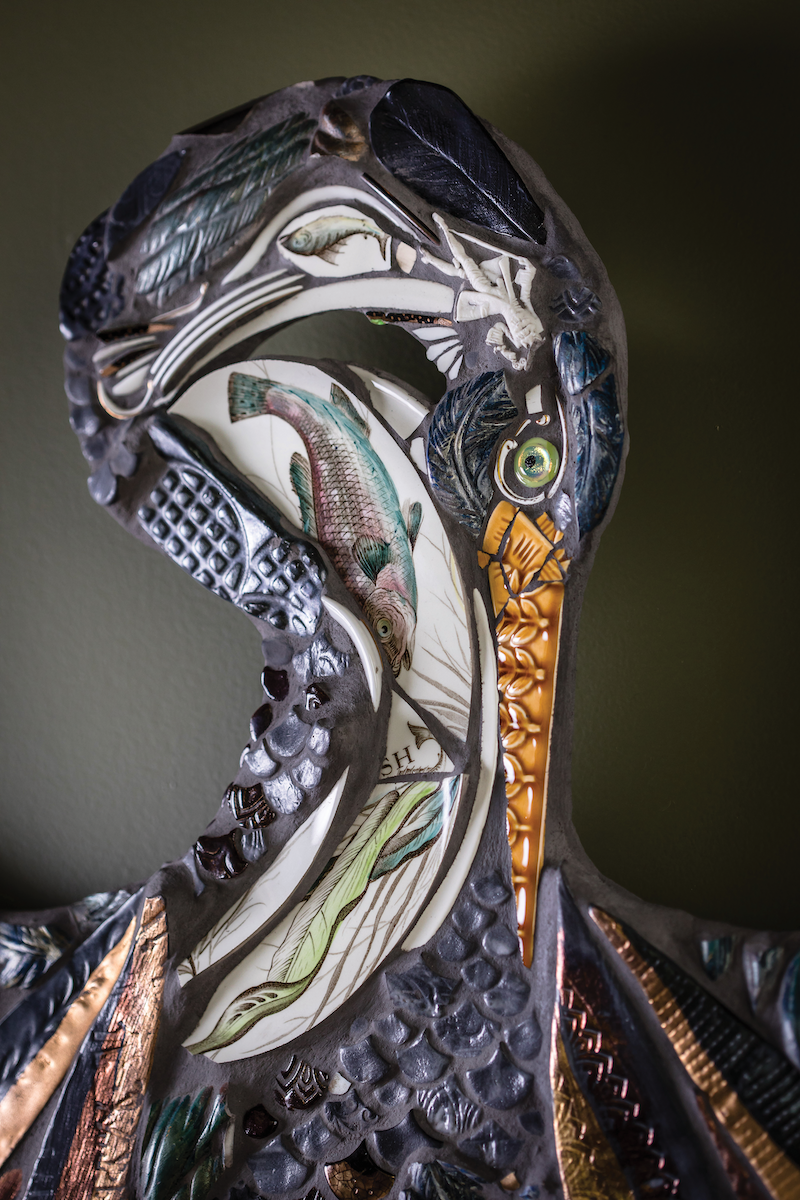The practice of French-Australian artist Jessie Yvette Journoud-Ryan is an amalgam of her experience, feeding both on her early years and education in ceramics in Burgundy, France, and her experiences of the natural wonders among the Dandenong Ranges, the place she now calls home. With a decade of Fine Arts training under her belt, the artist has developed a carefully considered practice, at the heart of which lies the patterns that surrounded her in her youth.
Her subjects are largely informed by the fauna of the Australian landscape, with Journoud-Ryan spending many hours watching and documenting wildlife at her local nature reserve. Her series Anhinga, which was exhibited at Tacit Art, Melbourne, in 2021, transforms birds into sculptural wall-pieces, each furnished with a unique plumage that utilises found crockery and ceramics. Using repeating patterns of feathers, fish scales and clam shells, the artist utilises European architectural design to breathe life and movement into her works.
The glazed roof tiles of Burgundy, France, and the architectural motifs around Dijon are echoed in the patterns she uses, and fleur-de-lys are dotted across their flanks. Journoud-Ryan describes these recurring sequences of shape and form as “personal totems, a representation of my double cultural belonging”. For the artist, then, pattern is not merely decorative but a way in which she can imbue her works with her own heritage.
Above: Jessie Yvette Journoud-Ryan, Anhinga A Place Out Of The Rain 2/12, 2021. Ceramics and glass on cement substrate, 130 x 92cm. Photos: Cathy Ronalds Photography. Courtesy: the artist.

Jessie Yvette Journoud-Ryan, Anhinga Bareuzai 5/12, 2021. Ceramics and glass on cement substrate, 137 x 83cm.

Jessie Yvette Journoud-Ryan, Anhinga Trame Losangée Nouée 12/12, 2021. Ceramics and glass on cement substrate,
124 x 95cm.

